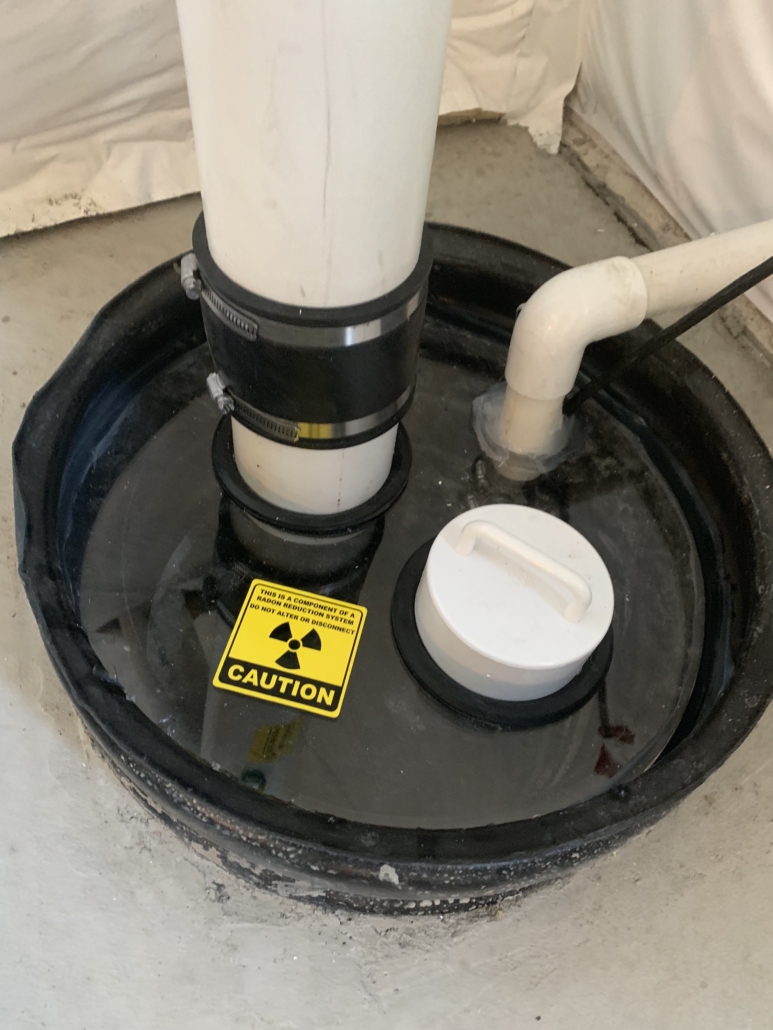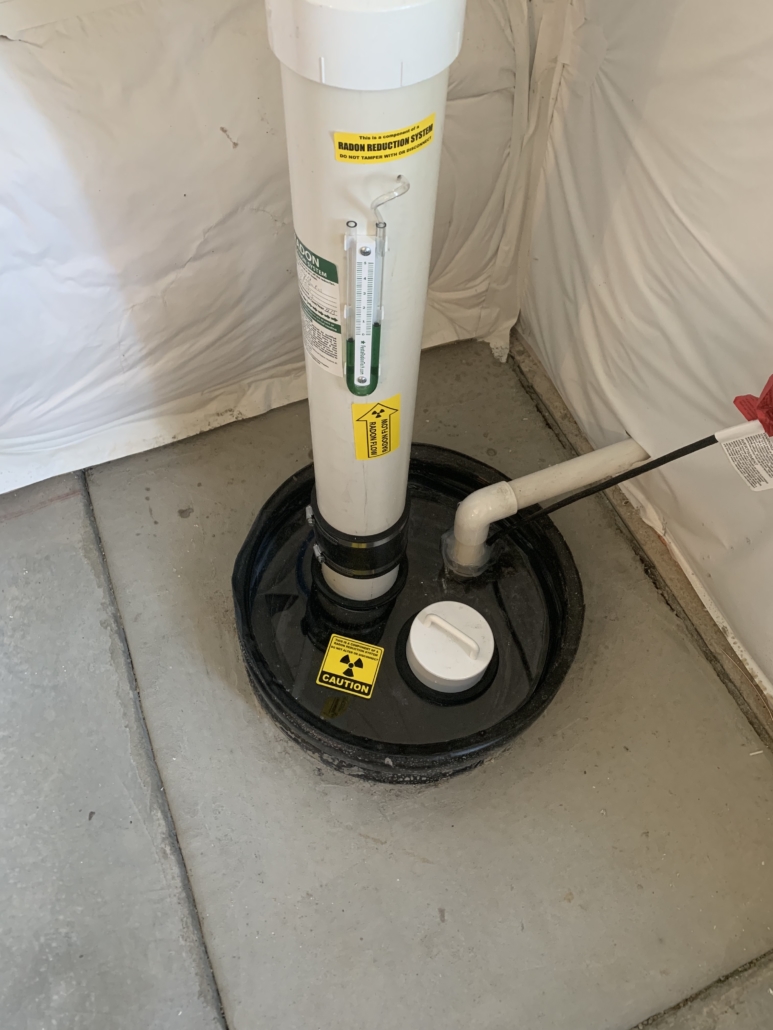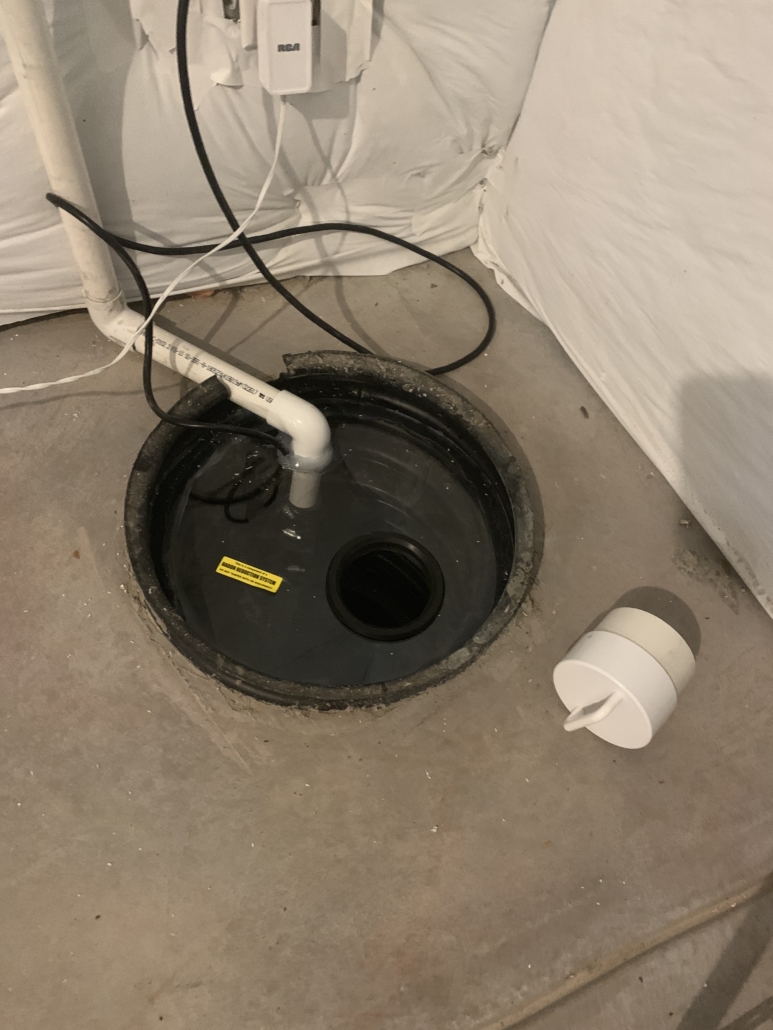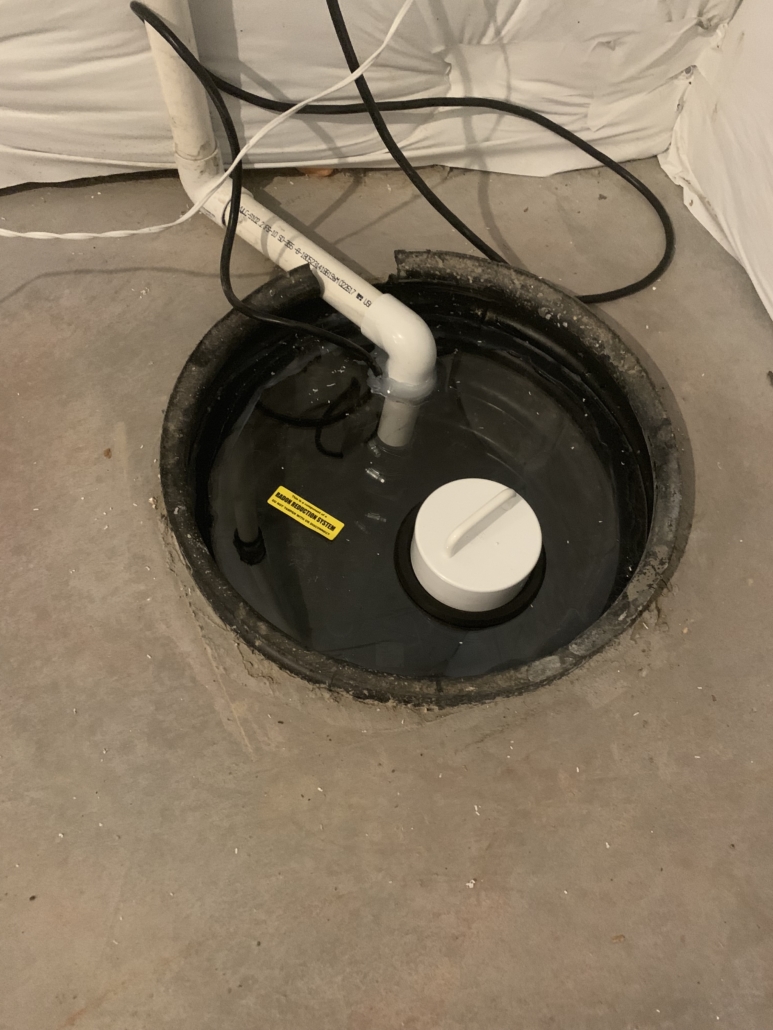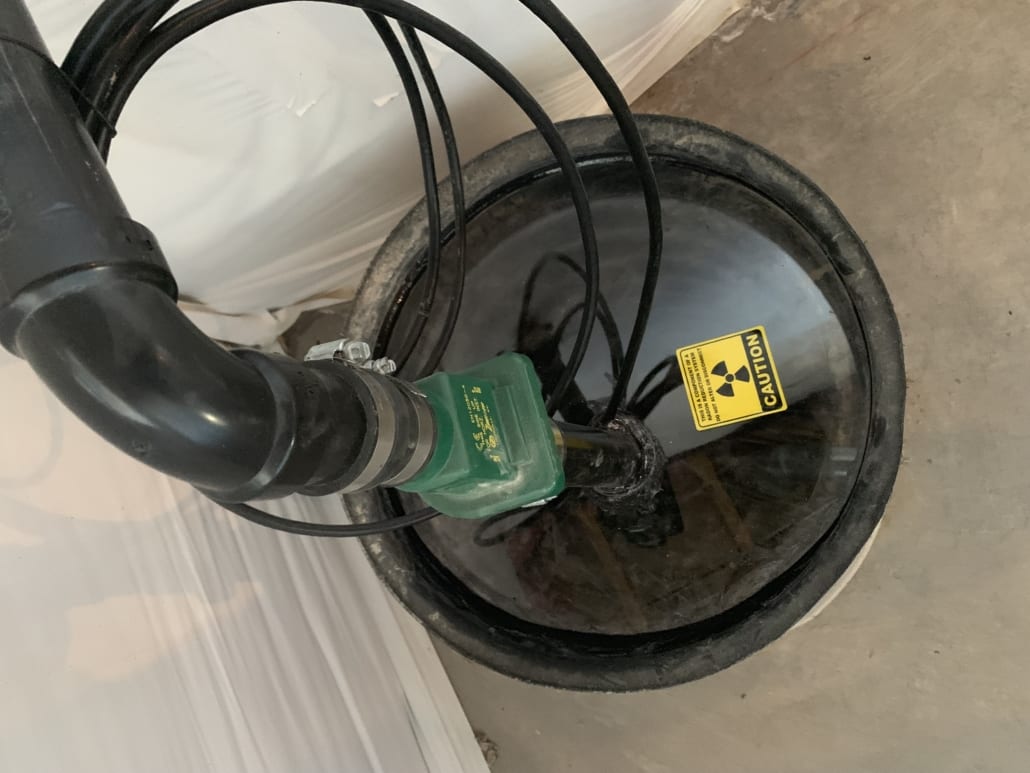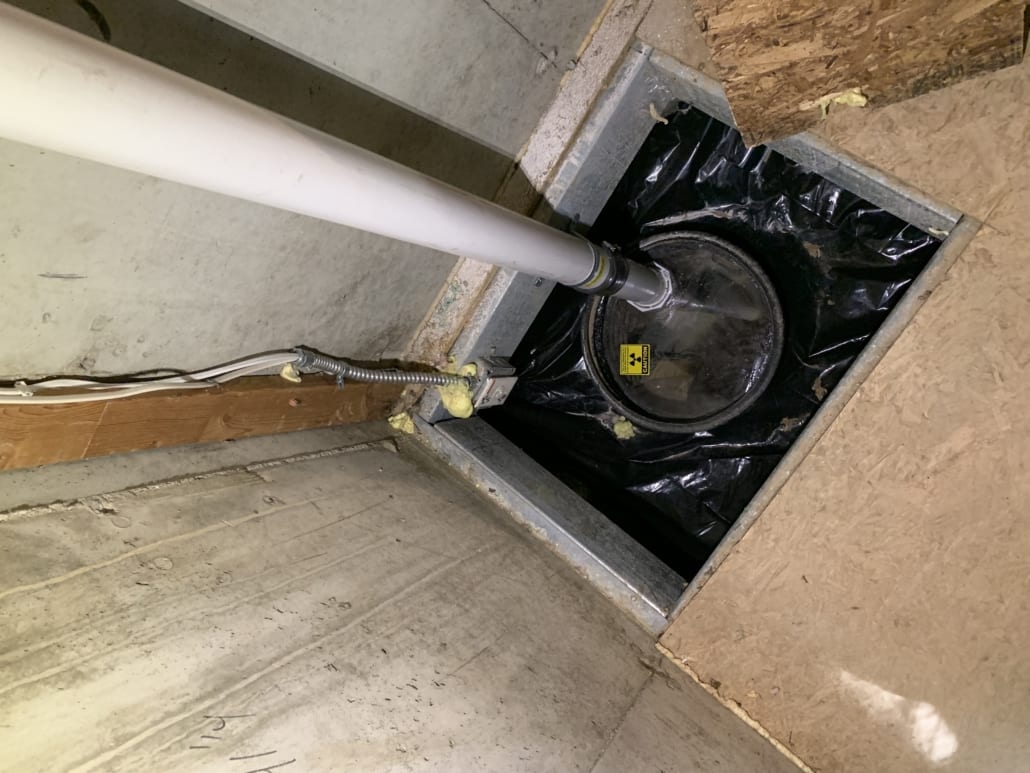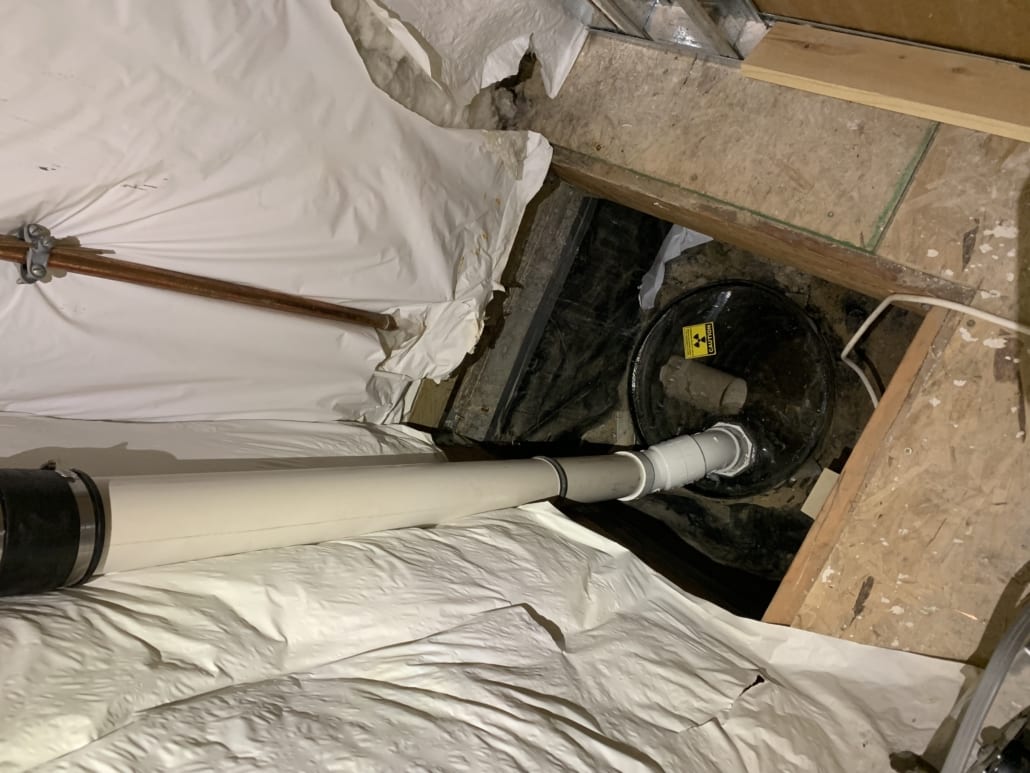As one could imagine, the sump pit or sump crock is a very easy way for the radon to enter the living space. Furthermore, in many cases, radon mitigation will use the sump system, also known as a drain-tile system, to create suction and vacuum pressure under the slab of an applicable structure. Just like sealing cracks and entry points in the lowest livable area is important, sealing this sump area is extremely important to create the proper vacuum pressure to draw the radon gas from the soil and stop it from entering the living space. The drain-tile is directly open to the soil and is a void space amidst the very compact soil and sub-slab material under the structure. Therefore, since radon always finds the path of least resistance, the toxic gas is drawn into this void space and will accumulate in higher concentrations in this area with direct access and entry to the living space. Again, it is important to note that sealing the sump crock alone will not completely deter the radon gas from entering the structure. This process is important for creating greater vacuum pressure and suction beneath the slab and ultimately better results in regard to radon reduction.
For more information about radon testing in Greater Denver or for more information about the dangers of radon gas in general, contact Colorado Radon Pro’s today!

